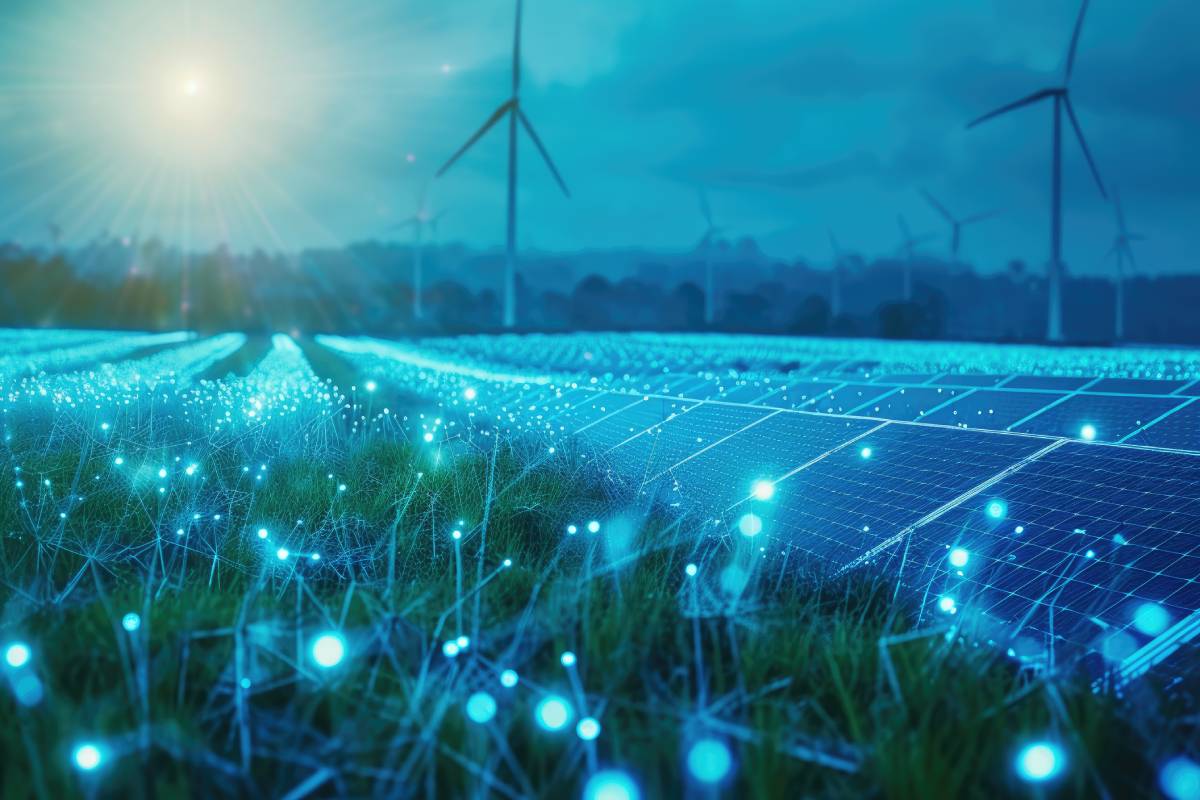Solar Power Innovations
The future of renewable energy tech is promising, with advancements driving the transition to more sustainable energy sources. This blog explores the latest innovations in renewable energy and their potential impact on various industries and daily life.
Solar power technology is continuously evolving, with new materials and designs improving efficiency and reducing costs. Innovations such as perovskite solar cells and bifacial panels are set to revolutionize the solar industry, making solar energy more accessible and efficient.
Wind Energy Advancements
Wind energy is another area of significant development. Offshore wind farms and floating wind turbines are expanding the potential for wind energy production. These technologies harness stronger and more consistent winds found at sea, increasing energy output and reliability.

Hydropower and Ocean Energy
Hydropower remains a crucial renewable energy source, and new technologies are enhancing its efficiency. Additionally, ocean energy, including tidal and wave energy, is emerging as a promising area. These technologies capture the kinetic energy of water movements, providing a consistent and sustainable energy source.
Battery Storage Innovations
Battery storage is critical for the future of renewable energy tech. Advancements in battery technology, such as solid-state batteries and flow batteries, are increasing storage capacity and reducing costs. These innovations enable the storage of excess energy generated by renewable sources, ensuring a stable and reliable energy supply.
Smart Grids and Energy Management
Smart grid technology is transforming how energy is distributed and managed. Integrating renewable energy sources into the grid requires advanced energy management systems. Smart grids use digital communication and automation to optimize energy distribution, reduce waste, and enhance reliability.
AI and Mobile Software in Renewable Energy
The integration of AI and mobile software in renewable energy tech is driving efficiency and innovation. AI algorithms analyze energy production and consumption data to optimize operations. Mobile software applications allow users to monitor and control energy usage remotely, making renewable energy management more accessible and efficient.

Green Hydrogen Technology
Green hydrogen, produced using renewable energy sources, is gaining traction as a clean fuel alternative. Innovations in electrolysis and hydrogen storage are making green hydrogen more viable for various applications, including transportation, industry, and power generation.
Policy and Investment in Renewable Energy
Government policies and investments play a crucial role in advancing renewable energy tech. Incentives, subsidies, and research funding support the development and adoption of renewable energy technologies. Public and private investments drive innovation and infrastructure development, accelerating the transition to a sustainable energy future.
Conclusion
In conclusion, the future of renewable energy tech is bright, with continuous advancements in solar, wind, hydropower, battery storage, and smart grid technology. The integration of AI and mobile software further enhances the efficiency and accessibility of renewable energy management. As these technologies evolve, they will play a pivotal role in reducing our carbon footprint and achieving a sustainable energy future.
Frequently Asked Questions (FAQs)
- What are the latest innovations in solar power?
Innovations such as perovskite solar cells and bifacial panels are improving efficiency and reducing costs in the solar industry. - How is wind energy technology advancing?
Offshore wind farms and floating wind turbines are harnessing stronger winds at sea, increasing energy output and reliability. - What is ocean energy?
Ocean energy includes tidal and wave energy, which capture the kinetic energy of water movements to generate sustainable energy. - Why is battery storage important for renewable energy?
Battery storage enables the storage of excess energy from renewable sources, ensuring a stable and reliable energy supply. - What are smart grids?
Smart grids use digital communication and automation to optimize energy distribution, reduce waste, and enhance reliability. - How are AI and mobile software used in renewable energy?
AI analyzes energy data to optimize operations, while mobile software applications allow remote monitoring and control of energy usage. - What is green hydrogen?
Green hydrogen is a clean fuel alternative produced using renewable energy sources, viable for transportation, industry, and power generation. - How do policies and investments support renewable energy?
Government policies, incentives, and investments drive the development and adoption of renewable energy technologies. - What are the benefits of integrating AI in renewable energy tech?
AI enhances efficiency, optimizes operations, and makes renewable energy management more accessible and effective. - How can renewable energy reduce our carbon footprint?
Renewable energy sources produce less carbon emissions compared to fossil fuels, helping to mitigate climate change and reduce environmental impact.



